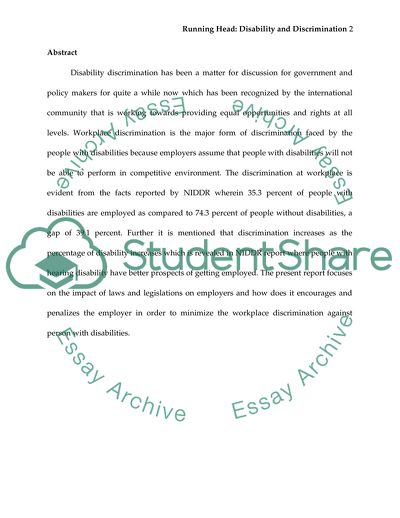Cite this document
(Disability and Discrimination at Workplace Coursework Example | Topics and Well Written Essays - 2000 words - 1, n.d.)
Disability and Discrimination at Workplace Coursework Example | Topics and Well Written Essays - 2000 words - 1. https://studentshare.org/human-resources/1754625-disability-and-discrimination
Disability and Discrimination at Workplace Coursework Example | Topics and Well Written Essays - 2000 words - 1. https://studentshare.org/human-resources/1754625-disability-and-discrimination
(Disability and Discrimination at Workplace Coursework Example | Topics and Well Written Essays - 2000 Words - 1)
Disability and Discrimination at Workplace Coursework Example | Topics and Well Written Essays - 2000 Words - 1. https://studentshare.org/human-resources/1754625-disability-and-discrimination.
Disability and Discrimination at Workplace Coursework Example | Topics and Well Written Essays - 2000 Words - 1. https://studentshare.org/human-resources/1754625-disability-and-discrimination.
“Disability and Discrimination at Workplace Coursework Example | Topics and Well Written Essays - 2000 Words - 1”. https://studentshare.org/human-resources/1754625-disability-and-discrimination.


